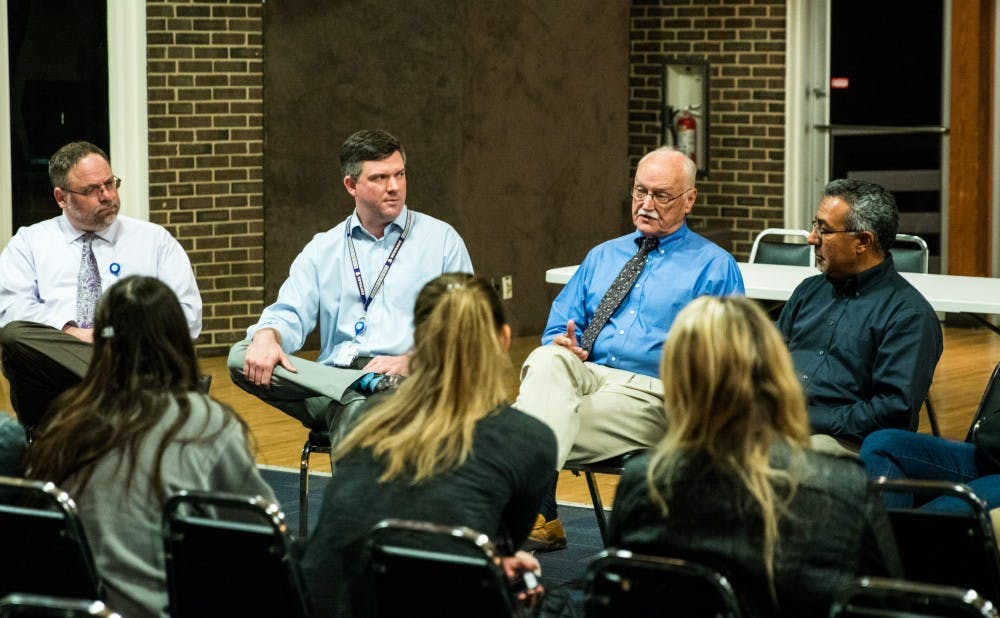A panel of administrators attempted to alleviate student concerns about Central Campus mold Wednesday evening.
Two weeks ago, Dean for Residential Life Joe Gonzalez notified Central Campus residents that Housing, Dining and Residence Life had contracted with an outside firm to test apartments for mold. These tests are nearly completed, and HDRL is working to evaluate the best responses for apartments that tests showed needed attention.
“Fortunately, the majority of our apartments don’t need a response,” Gonzalez said at the panel. “But there are some that do need a response. We want to make sure that we provide it as quickly as we can.”
Apartments identified as having unusual mold levels are being addressed through a “tailored response"—which includes cleaning the air handling unit and using HEPA vacuums on furniture and carpets. This work will not require relocating students for extended periods, Gonzalez noted.
Gonzalez added that the testing and treatment process will become a regular occurrence throughout the year, although HDRL has not yet decided how frequently.
“I think what we’re finding is these type of maintenance efforts will help us maintain the indoor air quality that we need these apartments to have in order for you to have an appropriate apartment in which to live,” Gonzalez said.
The contractors visually inspected each apartment for mold and took air samples from the living room and air handling unit. One student in attendance expressed concern that no samples were taken from the air in kitchens or bathrooms.
Wayne Thomann, director of the Occupational and Environmental Safety Office, said that the locations actually tested were designed to be representative of air in the apartment. Tests will be conducted again after HDRL attempts to remove the mold, in order to confirm the problem has been resolved.
Students also said they wanted test results and planned work to be made available to them. Gonzalez said students can contact him directly to obtain that information.
Although there were some complaints about mold last year, for which a similar forum was held, Thomann noted that this year has seen greater problems due to moist weather. John Vaughn, director of student health, said mold does not pose a threat to student health unless particular students have a sensitivity to it.
“Mold or fungus in the environment has never been shown to cause any serious medical problem," he said. "But it can certainly trigger an allergic reaction just like pollen or dust in the environment so when it accumulates in your HVAC units—for someone who’s predisposed to being allergic to that—it can cause some allergy symptoms."
The event was sparsely attended—about four or five students. Some complained that HDRL took a long time to respond to work order requests or that they received no response at all.
Andy Beville, director of facilities operations for HDRL, noted that maintenance tries to respond to urgent requests—but that students should continue to follow up if they do not hear back.
He also noted that mold concerns exist on West, East and Central Campus. But Central is harder to deal with because staff are not in the apartments every day, and mold grows more easily on the gypsum walls used in Central Campus apartments.
Panelists encouraged students to use their air conditioning system to create air flow and to keep their apartments clean in order to reduce the potential for mold growth.
Get The Chronicle straight to your inbox
Signup for our weekly newsletter. Cancel at any time.
Adam Beyer is a senior public policy major and is The Chronicle's Digital Strategy Team director.

